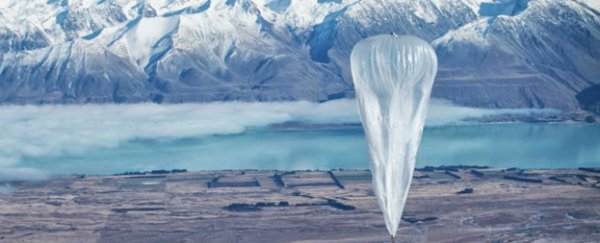When it comes to telecommunications, Australia is generally pretty behind the eight ball - sometimes so much so that we can't even see the ball anymore.
But in a surprisingly innovative move, the country's largest telecommunications company Telstra has now partnered with Google to begin trials of the search engine giant's ambitious Project Loon in western Queensland in December.
As part of Project Loon, Google plans to launch a network of high-altitude balloons into the sky, each capable of beaming a wireless signal to the ground below.
The ultimate goal is to provide internet to the two-thirds of the world that currently isn't connected, and also help bring Wi-Fi to the poorest and most remote regions, as well as those areas struck by natural disasters.
The benefit of the balloon distribution method is that countries don't have to invest in laying underground cabling in order to increase the coverage of their networks. Facebook is planning to do a similar thing, but using solar-powered drones instead.
As part of the partnership, Telstra will offer Google access to its base stations and a segment of its 2.6 GHz spectrum. And in December, 20 balloons carrying Telstra's Wi-Fi signal will be launched across the Queensland outback to see how well the project works in practice.
These balloons will be floating around twice as high as passenger planes - the system works by having grounded stations bounce Wi-Fi signals off the balloons. The balloons then reflect the signal along to each other, and each time it hits a balloon, Wi-Fi signal is transmitted down to a large area on the ground.
The balloons' machinery is solar powered, and the devices can stay floating for around 100 days.
In the future, Google plans to lease its balloons out to wireless providers around the world, rather than buying access to their wireless spectrum.
While the project definitely has noble goals, it's faced a few setbacks so far - trial flights of the balloons have resulted in destroyed power lines and mistaken reports of a plane crash.
But if these first internet trials are successful, Google will only have the hurdle of working out how to keep the balloons floating in one place to overcome.
No word yet on how much Telstra would be charging people to access their balloon-beamed Wi-Fi signal.
Source: The Guardian
